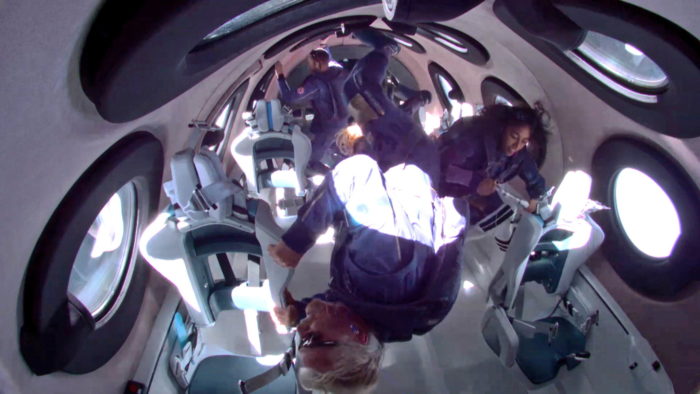Jul 12 2021
The Dawn of Space Tourism
 A common theme that emerges when writing about science and technology is that often the most important factor in determining if and how a technology is adapted is not the tech itself. Economics is often the overriding factor. People will tend to take the most efficient and least expensive route to any goal. We don’t usually do things just because we can. This is why it is so important that the market places a fair and proper price on goods and services without significant distortion. Distorted market forces (like allowing companies to externalize real costs of their business) will produce distorted outcomes. (Government regulation is used when efficiency is not the only desired outcome. We also want a clean environment, justice, and protection of minors, for example.)
A common theme that emerges when writing about science and technology is that often the most important factor in determining if and how a technology is adapted is not the tech itself. Economics is often the overriding factor. People will tend to take the most efficient and least expensive route to any goal. We don’t usually do things just because we can. This is why it is so important that the market places a fair and proper price on goods and services without significant distortion. Distorted market forces (like allowing companies to externalize real costs of their business) will produce distorted outcomes. (Government regulation is used when efficiency is not the only desired outcome. We also want a clean environment, justice, and protection of minors, for example.)
This is why recent developments have been exciting for space enthusiasts, who have long accepted that the route to a robust space infrastructure requires commercialization of space. Big government programs will pave the way, bootstrapping the technology, but will likely not be able to sustain a space industry. The moment going to space becomes profitable, we will truly enter the space age. And one industry well positioned to be on the leading edge of commercialization is tourism.
All this is why the recent trip to the edge of space by Virgin Galactic is noteworthy. The ship is designed as a space plane, that takes off horizontally like a traditional jet. There is a carrier portion, named White Knight, which carries the actual ship, Spaceship 2, in the middle section (the mission itself was dubbed Unity 22). At 15 km the ships separated. Spaceship 2 then rocketed up to an altitude of 80 km. “Space” is considered to begin at 100 km (at the Kármán line), so this was technically not into space (therefore the oft-cited “edge of space”). Also, this was a suborbital flight, not capable of getting into orbit around the Earth. The maximum altitude of Spaceship 2 is about 90 km, so it is not capable of orbital flight.
Onboard Unity 22 was Virgin Galactic founder, Sir Richard Branson. With him were two pilots and three employees of the company – six people total. This means on future missions they will be able to take four paying passengers, along with the two pilots. The company reports that they already have many reserved seats, at $250,000 each. Like many industries, there are early adopters with lots of disposable income willing to pay high prices for the privilege.
On July 20th this month Jeff Bezos will fly his ship, the rocket Blue Origin, into space. An unnamed passenger reported paid $28 million to fly with Bezos. The Blue Origin ship is also suborbital, but it will fly above the Kármán line, so technically will be into space. Both ships fly up, have a period of zero G at the top of their flight, then come down for a landing. But at that height, the view is reportedly amazing, which no picture can truly capture. It’s apparently like standing on the edge of the Grand Canyon, the size and scope of it is overwhelming, and you suddenly realize how inadequate every picture you have ever seen of it is. At that altitude you can seen the curvature of the Earth (because, you know, the Earth is roughly a sphere).
Axiom is a private company building a module that will be added to the ISS, and then will eventually detach to form it’s own space station. Three people have paid $55 million each to Axiom to ride onboard Space X’s Dragon crew capsule to the ISS. SpaceX has partnered with Axiom for this service.
For now most space tourism will be for one-off flights into or near space. But for space tourism to really take off (pun intended) there will need to be someplace to go. The ISS is nice, but not exactly designed for tourists. Space company Orbital Assembly Corporation (OAC) has announced plans to build a space hotel, called Voyager. This will be a wheel design (like in the movie 2001), that will rotate to generate artificial gravity. It’s too early to tell if and how long it will take for this station to become a reality, but the plans are interesting.
The question is, will wealthy adventurers be enough to bootstrap a space tourism industry? If it does, how much can the price of a ticket to space come down? By some estimates, with increased reusability and efficiency, it may be possible to get the cost of getting a person into orbit down to around $20,000. This is still really expensive, but you wouldn’t have to be a millionaire to afford a once-in-a-lifetime trip into space. Prices won’t be coming down farther than that anytime soon. Even with complete reusability, fuel costs are still going to be expensive. Suborbital flights can get cheaper, however.
Early indications are that space tourism is feasible, but definitely the next few decades will tell if this is more of a fad, or the beginning of a sustainable industry.






